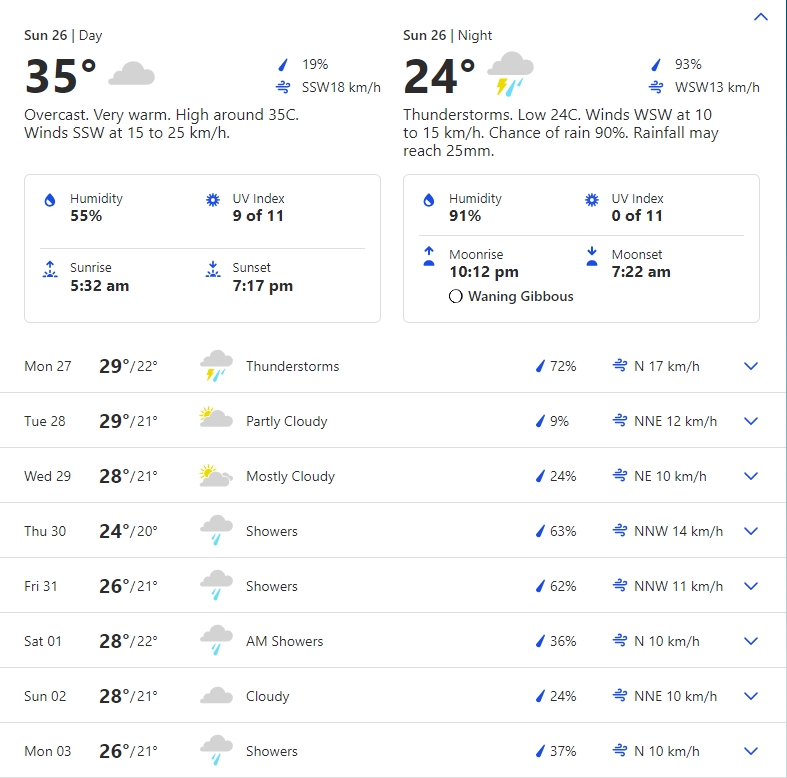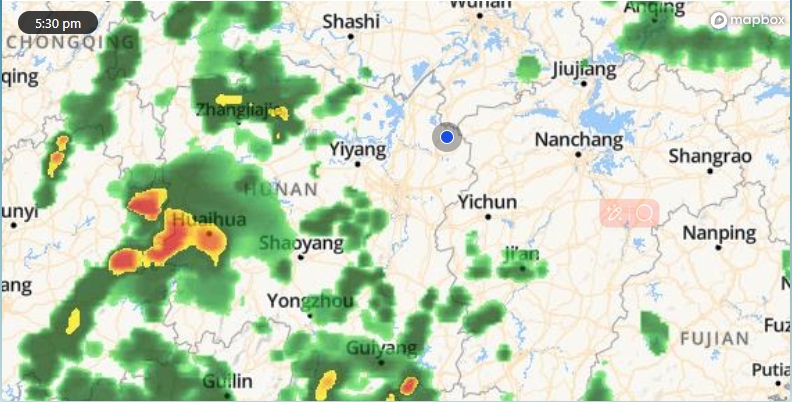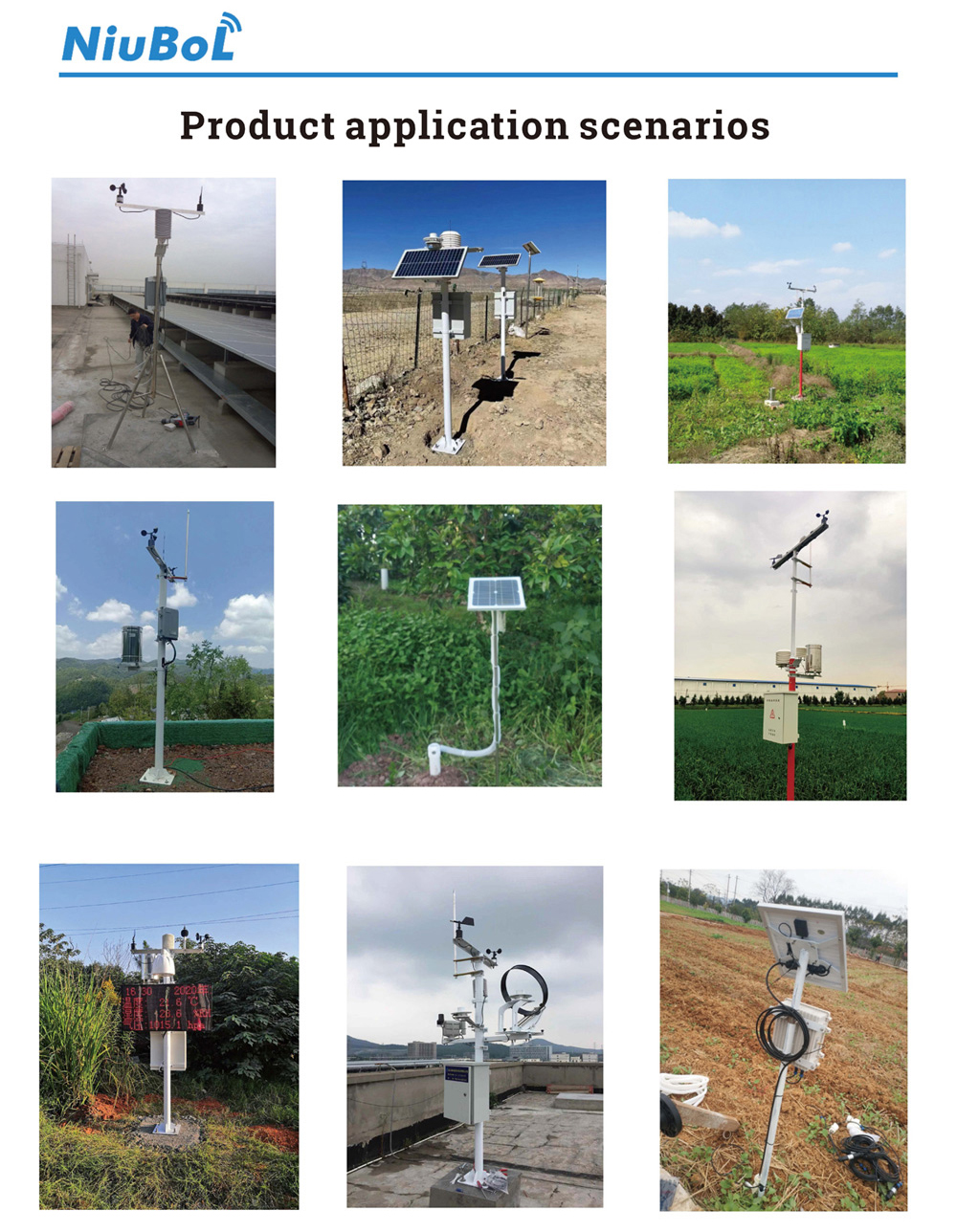

— Blogs —
—Products—
 Consumer hotline +8618073152920
Consumer hotline +8618073152920 WhatsApp:+8615367865107
Address:Room 102, District D, Houhu Industrial Park, Yuelu District, Changsha City, Hunan Province, China
Product knowledge
Time:2024-05-26 14:11:14 Popularity:689
What is an automatic weather station
Automatic weather station is a kind of equipment that can automatically observe and store meteorological observation data, which is mainly composed of sensors, data acquisition instrument, communication module, power supply system, radiation-proof ventilated cover and all-weather protective box and other parts. It is capable of real-time observation and recording of wind speed, wind direction, rainfall, air temperature, air humidity, light intensity, soil temperature, soil humidity, evapotranspiration, atmospheric pressure and other dozen of meteorological elements, which provides important data support for meteorological forecasting, agricultural production, transportation, environmental protection and scientific research and other fields.
Working Principle of Automatic Weather Station
The working principle of automatic weather station is mainly to convert meteorological elements into electric signals through various meteorological sensors, and collect, process and store them through data acquisition instrument. The data collector transmits the collected data to the central station or cloud platform through the communication module, and users can access and view the data remotely through devices such as computers or mobile phones. Meanwhile, the automatic weather station is also equipped with power supply system, anti-radiation ventilation cover and all-weather protection box to ensure the normal operation of the equipment and the accuracy of the data.
Main Application Scenarios of Automatic Weather Station
Due to its high degree of automation, high precision and real-time nature, automatic weather station is widely used in various scenarios that require meteorological data support. The following are its main application scenarios:
1. Weather forecasting: automatic weather station can provide real-time and accurate weather data, which provides an important basis for weather forecasting. Through the collected data, meteorological departments can predict weather changes, issue early warning information in advance, and provide timely weather services for the public.
2. Agricultural production: In agricultural production, automatic weather stations can monitor the meteorological conditions of farmland, such as temperature, humidity, light, etc., and provide farmers with scientific planting suggestions. Meanwhile, by monitoring rainfall, farmers can arrange irrigation to improve crop yield and quality.
3. Transport: In the field of transport, automatic weather stations can monitor the meteorological conditions of roads, such as visibility, wind speed, etc., to provide an important guarantee for traffic safety. Especially in bad weather conditions, automatic weather stations can release timely warning information to remind drivers to pay attention to driving safety.
4. Environmental protection: automatic weather stations can monitor air quality, precipitation and other environmental parameters, providing data support for environmental protection. Through real-time monitoring and data analysis, environmental problems can be detected in time and appropriate measures can be taken for management.
5. Scientific research: in scientific research in the fields of meteorology, environment and ecology, automatic weather stations can provide a large number of continuous, high-precision meteorological data, providing an important research basis for researchers.

There is an inseparable relationship between weather stations and weather forecasting.
Firstly, weather stations are the basic data source for weather forecasting. By installing various meteorological sensors, weather stations observe and record data on wind speed, wind direction, rainfall, temperature, humidity, air pressure and other meteorological elements in real time. These data are the basis of weather forecasting. Without accurate and timely meteorological data, the accuracy and reliability of weather forecasting cannot be guaranteed.
Secondly, data collection and processing at weather stations is an important part of weather forecasting. Raw data collected by weather stations need to go through a series of processing and analyses, including data quality control, data format conversion, data interpolation, and so on, in order to ensure the accuracy and usability of the data. These processed data are then transmitted to meteorological centres or weather forecasting agencies for the production and dissemination of weather forecasts.

In addition, data from weather stations can be used for research and validation of weather models. Meteorological models are important tools for weather forecasting, which can simulate and predict future weather changes based on historical and real-time data provided by weather stations. The data from weather stations can provide an important reference and basis for the establishment, debugging and validation of weather models.
Finally, the accuracy and reliability of weather forecasts also directly affect the construction and operation of weather stations. Accurate weather forecasts can help people make better arrangements for production and life and reduce losses caused by weather changes. Therefore, the construction and operation of meteorological stations require continuous improvement of observation technology and data processing capability in order to provide more accurate and timely meteorological data support.

Weather stations can forecast the weather mainly based on the following principles and technical support:
1. Observation of meteorological elements:
By installing a variety of meteorological sensors, weather stations observe and record real-time data on meteorological elements such as wind speed, wind direction, rainfall, temperature, humidity and barometric pressure. These meteorological elements are the basic elements constituting the atmospheric state, and their real-time changes reflect the trend of the atmospheric state.
2. Principles of meteorology:
The core of weather forecasting is the principle of meteorology, i.e. the exploration and study of the basic laws of atmospheric physics, chemistry, dynamics and thermodynamics. The data observed by weather stations, combined with the principles of meteorology, can reveal the interrelationships and mechanisms of various meteorological elements in the atmosphere and provide theoretical support for weather forecasting.
3. Data analysis and processing:
Raw data collected by meteorological stations need to go through a series of processing and analyses, including data quality control, data format conversion, data interpolation and so on, to ensure the accuracy and usability of the data. These processed data will be transmitted to meteorological centres or weather forecasting agencies for further analysis and prediction.
4. Numerical simulation:
Numerical modelling techniques are used to input the observed data of various meteorological elements in the atmosphere into a computer for computation and simulation to arrive at a prediction of weather conditions for a future period of time. This method requires the collection of a large amount of meteorological data, complex mathematical calculations and simulations, and is currently one of the main methods of weather forecasting.
5. Satellite and radar monitoring:
Weather stations, in combination with satellite and radar monitoring techniques, can observe and monitor various changing conditions on the Earth's surface and in the atmosphere, as well as the occurrence and evolution of weather phenomena such as storms and rainfall. These data provide important support and information for weather forecasting, improving the accuracy and timeliness of forecasts.
6. Artificial intelligence algorithms:
Artificial intelligence algorithms also play an important role in data processing and weather forecasting. Through machine learning and other technologies, historical meteorological data can be analysed and mined to discover the correlation and regularity between meteorological elements and improve the accuracy and efficiency of weather forecasting.

In summary, the relationship between weather stations and weather forecasting is interdependent and mutually reinforcing. The ability of weather stations to forecast the weather relies mainly on real-time observation of meteorological elements, the application of meteorological principles, the analysis and processing of data, the application of numerical simulation techniques and the support of satellite and radar monitoring. Together, these factors form the basis and foundation of weather forecasting, enabling us to predict and forecast future weather changes on the basis of the data and information provided by weather stations.
Prev:The crucial role of meteorological station data in multiple fields
Next:What is Multi-depth Soil Moisture and Temperature Sensor
Related recommendations
Sensors & Weather Stations Catalog
Agriculture Sensors and Weather Stations Catalog-NiuBoL.pdf
Weather Stations Catalog-NiuBoL.pdf
Related products
 Combined air temperature and relative humidity sensor
Combined air temperature and relative humidity sensor Soil Moisture Temperature sensor for irrigation
Soil Moisture Temperature sensor for irrigation Soil pH sensor RS485 soil Testing instrument soil ph meter for agriculture
Soil pH sensor RS485 soil Testing instrument soil ph meter for agriculture Wind Speed sensor Output Modbus/RS485/Analog/0-5V/4-20mA
Wind Speed sensor Output Modbus/RS485/Analog/0-5V/4-20mA Tipping bucket rain gauge for weather monitoring auto rainfall sensor RS485/Outdoor/stainless steel
Tipping bucket rain gauge for weather monitoring auto rainfall sensor RS485/Outdoor/stainless steel Pyranometer Solar Radiation Sensor 4-20mA/RS485
Pyranometer Solar Radiation Sensor 4-20mA/RS485
Screenshot, WhatsApp to identify the QR code
WhatsApp number:+8615367865107
(Click on WhatsApp to copy and add friends)